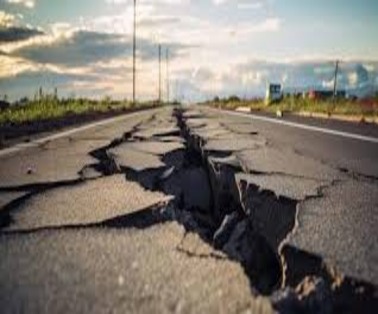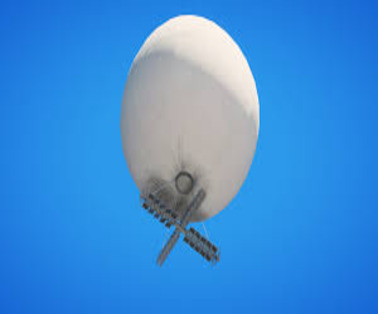A rare, powerful earthquake struck Morocco on September 8 night, killing hundreds of people and damaging buildings, including in the historic city of Marrakech.
Key Points about the Morocco Earthquake
- The strong tremors were also felt in the coastal cities of Rabat, Casablanca and Essaouira, where it caused widespread damage and sent terrified residents and tourists scrambling to safety
- In the mountain village of Tafeghaghte, which was near the quake’s epicentre, there were no buildings left standing
- The massive February earthquake in Turkey had horizontal movement, because the country is shifting to the West, moving towards Greece. There was a horizontal sliding of the tectonic plates.
- But in Morocco, there was a convergence between Africa and Eurasia or Iberia, the Spanish part, and overlapping faults
Understanding the Earthquake
- The epicentre of the 6.8-magnitude quake was in a mountainous area 72 kilometres southwest of the tourist city of Marrakesh, the US Geological Survey reported.
- The epicentre was roughly 5 km below the Earth’s surface, according to USGS, while Morocco’s own seismic agency pegged the depth at 11 km.
- It was a shallow earthquake, which are more dangerous as the closer you get to the surface, the greater the effect of the rupture.
- According to reports, in case of deeper earthquakes, the seismic waves have to travel a longer distance before reaching to the surface.
- During this delay the tremors lose energy to the surroundings. While in case of shallow quakes, the seismic waves are able to bring more energy to the surface and cause more damage.
The Strongest Earthquake to Hit Morocco
- Earthquakes are also not very common in North Africa where seismicity rates are comparatively low along the northern margin of the continent.
- However, the latest earthquake was the strongest-ever to hit the North African kingdom
- The epicentre of the quake was not in the most active area of Morocco.
- Due to the unlikely of the tremors in the region, people were not prepared for one.
- People in the poor rural community about 45 kilometres northeast of the quake epicentre lived in homes made of clay brick and cinder block, many of which are no longer standing or safe to inhabit.
Why Did the Morocco Earthquake Occur?
- While seismicity rates are indeed lower in the region, making earthquakes rarer, they are not completely unheard of.
- Such quakes occur due to the “northward convergence of the African plate with respect to the Eurasian plate along a complex plate boundary.”
- With respect to this recent quake, the USGS attributed it to “oblique-reverse faulting at shallow depth within the Moroccan High Atlas Mountain range”.
- A fault is a fracture or zone of fractures between two blocks of rock. Faults allow the blocks to move relative to each other, causing earthquakes if the movement occurs rapidly. During a quake, the rock on one side of the fault suddenly slips with respect to the other.’
- Faults which move along the direction of the dip plane are dip-slip faults, whereas faults which move horizontally are known as strike-slip faults.
- Oblique-slip faults show characteristics of both dip-slip and strike-slip faults. The term ‘reverse’ refers to a situation where the upper block, above the fault plane, moves up and over the lower block. This type of faulting is common in areas of compression — when one tectonic plate is converging into another.
Understanding Earthquakes
- Earthquakes are caused due to the tectonic movements of the earth.
- The energy release produces waves that travel in all directions.
- This causes a release of energy, and the energy waves travel in all directions.
- The point where the energy is released is called the focus of an earthquake or hypocentre.
- The point on the surface of the earth which is vertically above the focus is called the epicentre. It is the first place to experience the waves.
Measurement of Earthquakes
- The energy from an earthquake travels through Earth in vibrations called seismic waves.
- Scientists can measure these seismic waves on instruments called seismometers.
- A seismometer detects seismic waves below the instrument and records them as a series of zig-zags.
- Scientists can determine the time, location and intensity of an earthquake from the information recorded by a seismometer. This record also provides information about the rocks the seismic waves traveled through.
- The earthquake events are scaled either according to the magnitude or intensity of the shock. The magnitude scale is known as the Richter scale. The magnitude relates to the energy released during the quake. The magnitude is expressed in absolute numbers, 0-10.
- The intensity scale is named after Mercalli, an Italian seismologist. The intensity scale takes into account the visible damage caused by the event. The range of intensity scale is from 1-12.
Types of Earthquakes
- Tectonic earthquakes: The most common form of earthquake, is caused by the movement of loose fragmented pieces of land on the earth’s crust knowns as tectonic plates.
- Volcanic earthquake: The less prevalent compared to the tectonic variety, these earthquakes happen before or after the eruption of a volcano. It is caused when magma leaving the volcano is filled by rocks being pushed to the surface.
- Collapse earthquake: This earthquake occurs in underground mines. The main cause is the pressure generated within the rocks.
- Explosion earthquakes: The occurrence of this type of earthquake is artificial. High-density explosion such as nuclear explosions is the primary cause
Morocco
- Morocco has a coast by the Atlantic Ocean that reaches past the Strait of Gibraltar into the Mediterranean Sea.
- It is bordered by Spain to the north (a water border through the Strait and land borders with three small Spanish-controlled exclaves, Ceuta, Melilla, and Peñón de Vélez de la Gomera), Algeria to the east, and Western Sahara to the south.
- Since Morocco controls most of Western Sahara, its de facto southern boundary is with Mauritania.
To Download Monthly Current Affairs PDF Click here
Click here to get a free demo
Everything About CLAT 2025



